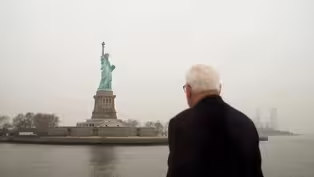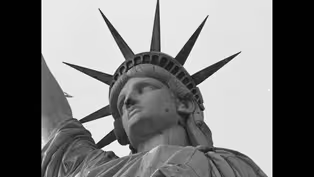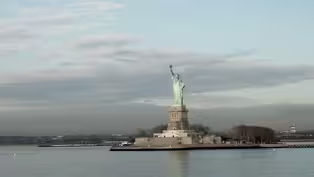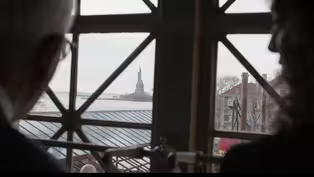
How the Statue of Liberty's Anti-Slavery Origins Evolved
Clip: Episode 5 | 3m 41sVideo has Closed Captions
A look at how Lady Liberty's anti-slavery origins and design changed over time.
In this clip, Alan Kraut, Chair of the Statue of Liberty-Ellis Island History Advisory Committee and Lonnie Bunch, Secretary of the Smithsonian Institution, explain the statue’s anti-slavery historical roots to David Rubenstein, and how their representation on the statue changed over time.
Problems playing video? | Closed Captioning Feedback
Problems playing video? | Closed Captioning Feedback
Iconic America: Our Symbols and Stories with David Rubenstein is a production of Show of Force, DMR Productions, and WETA Washington, D.C. David M. Rubenstein is the host and executive...

How the Statue of Liberty's Anti-Slavery Origins Evolved
Clip: Episode 5 | 3m 41sVideo has Closed Captions
In this clip, Alan Kraut, Chair of the Statue of Liberty-Ellis Island History Advisory Committee and Lonnie Bunch, Secretary of the Smithsonian Institution, explain the statue’s anti-slavery historical roots to David Rubenstein, and how their representation on the statue changed over time.
Problems playing video? | Closed Captioning Feedback
How to Watch Iconic America
Iconic America is available to stream on pbs.org and the free PBS App, available on iPhone, Apple TV, Android TV, Android smartphones, Amazon Fire TV, Amazon Fire Tablet, Roku, Samsung Smart TV, and Vizio.
Buy Now
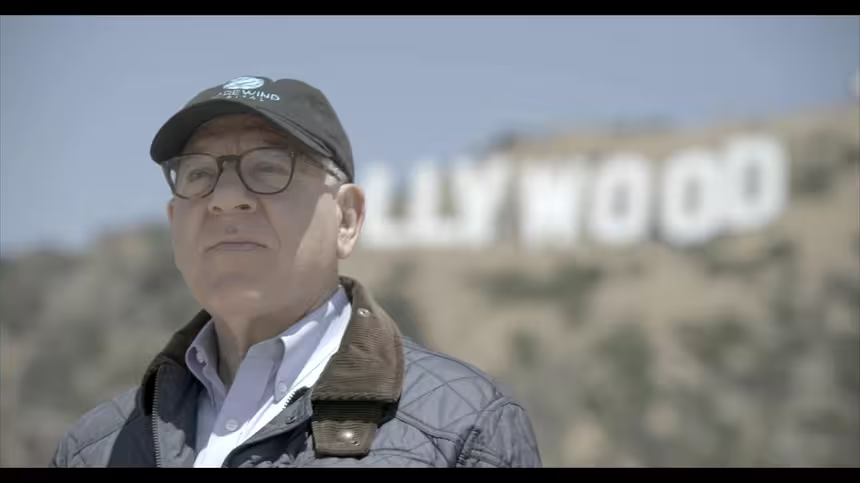
Our Symbols and Stories
David Rubenstein examines the history of America through some of its most iconic symbols, objects and places, in conversation with historical thinkers, community members and other experts. Together, they dive deep into each symbol’s history, using them as a gateway to understanding America’s past and present.Providing Support for PBS.org
Learn Moreabout PBS online sponsorship(dramatic music) - [David] I had never heard that the Statue of Liberty had ties to abolition and was curious about this surprising connection.
- You know, David, one of the things that people often don't understand is the origins of the Statue of Liberty.
If we take a look at the statue, there is a little piece of chain under the left foot of the statue.
That's all you can see of what was originally the crushing of the chains of bondage by Miss Liberty, which symbolized the ending of slavery.
(melancholy music) The idea came out of the head of Edouard Laboulaye, who was a French expert in constitutionalism and politics, a great admirer of Abraham Lincoln, an advocate of emancipation, and after the assassination he wanted a way to celebrate Lincoln's legacy and the emancipation of the slaves.
And it's really quite fascinating to see the development of the concept of the statue and what happens to the chains of bondage which had once been, at least in early representations, present in the hands of the statue is reduced to the foot of the statue.
- [David] Wow.
(wistful music) James Baldwin once said that history makes the present complete.
I wanted to investigate more about the history of the statue's origins with my friend Lonnie Bunch, head of the Smithsonian Institution.
(wistful music) I did not know that the Statue of Liberty had any connection to abolition and Reconstruction.
I thought I knew a lot about history, but I didn't know that.
- Yes, when the idea was conceived, it was a celebration of emancipation, but there was little attempt as the design evolved to continue to tell the story of abolitionism.
And in a way, it is interesting that it's so high up that you rarely can see it even if you're looking for it.
(melancholy music) I think you tell a great deal about a country by what it remembers, and monuments are a concrete way of remembering.
You also learn a lot about a country by what it forgets.
And I'm fascinated that where we are as a nation is really grappling with what is good history, what should we know, what should we remember.
(melancholy music) The story of the initial conception is little known, the notion that the leader of the French anti-slavery society really wanted to celebrate Abraham Lincoln and celebrate the abolition of slavery.
But over time, as people began to think about what the ultimate final design would be, abolitionism slowly became less important.
By 1886, the United States had given up on sort of bringing the North and South together, including African Americans.
The belief was that you eliminate them, the nation can come back together, you know, the notion of brother versus brother, and so there wasn't a real interest to talk about slavery.
So this really became a symbol that was available to be embraced for other things.
(dramatic music)
A Catalyst for Reflection on Our Past Transgressions
Video has Closed Captions
Clip: Ep5 | 1m 6s | Poet Laureate Tracy K. Smith reflects on Lady Liberty's potential as an agent of change. (1m 6s)
Video has Closed Captions
Clip: Ep5 | 3m 56s | America's greatest symbol has its roots in a small town in France, 300 miles from Paris. (3m 56s)
A Poem for All Americans, About Immigration
Video has Closed Captions
Clip: Ep5 | 55s | A look at how the poem, "The New Colossus" came to be engraved on the Statue of Liberty. (55s)
Video has Closed Captions
Preview: Ep5 | 31s | It's hard to argue that there's a more iconic symbol of America than the Statue of Liberty (31s)
Video has Closed Captions
Clip: Ep5 | 47s | David Rubenstein asks Professor Ed Berenson why Lady Liberty is a symbol of America. (47s)
"Their Immigration Story Becomes the Story of Their Life"
Video has Closed Captions
Clip: Ep5 | 2m 45s | David Rubenstein visits Ellis Island with Atlantic writer Caitlin Dickerson. (2m 45s)
Providing Support for PBS.org
Learn Moreabout PBS online sponsorshipSupport for PBS provided by:
Iconic America: Our Symbols and Stories with David Rubenstein is a production of Show of Force, DMR Productions, and WETA Washington, D.C. David M. Rubenstein is the host and executive...
